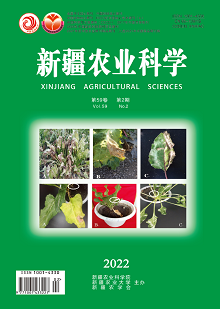【Objective】 To study the differences of serum reproductive hormones, biochemical indicators and ovarian development between the high and low egg production of Xinjiang Yili geese in the hope of providing reference for the assisted selection of egg production traits of Xinjiang Yili geese. 【Methods】 20 geese were selected from the high and low egg production period, respectively, and their serum parameters were measured.Then 10 Yili geese were slaughtered from the high and low egg production groups, and their ovaries were taken for histological observation. 【Results】 (1) In terms of reproductive hormone,compared with LEP group,the levels of GnRH, LH, FSH, E2 and P4 in the serum of Xinjiang Yili geese in HEP group were extremely significantly increased (P<0.01while the level of PRL was no significantly (P > 0.05).(2) In terms of serum biochemical with LEP group, ALP and ALT activities, TP, Cr, UA, Glu, TG, Ca and Pi contents in HEP group were extremely significantly increased (P<0.01), BUN contents significantly increased (P<0.05), while TC contents was no significantly (P > 0.05).(3) In terms of ovary section, the follicles of Yili geese in HEP group developed actively at all levels, with more growing follicles, smooth and round follicles, thick granular layer and film layer, while the follicles of Yili geese in LEP group lacked dominant follicles, with more primitive follicles and primary follicles, and some of them sunken and atrophied inward. 【Conclusion】 In conclusion, there are significant differences in serum parameters and ovarian development between Xinjiang Yili geese with high and low egg production.In addition, in terms of reproductive hormones, GnRH, LH, FSH, E2 and P4 were higher; In terms of biochemical indexes, the high level of ALP and ALT activity and the contents of TP, Cr, UA, GLU, TG, CA, Pi and BUN can be used as serum parameters for high-yield egg breeding of Xinjiang Yili goose.This study can provide reference for the assisted breeding of Xinjiang Yili.

